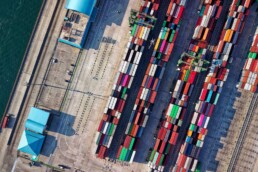The global supply chain is facing a significant shift as the Trump administration’s new tariffs take effect. These policies, intended to boost domestic manufacturing, have triggered disruptions across industries, affecting costs, availability, and logistics strategies. Businesses relying on international sourcing must now rethink their supply chain management to maintain competitiveness in a rapidly changing environment.
The Rising Costs of Imports and Supply Chain Adjustments
One of the most immediate consequences of the Trump Tariffs Impact is the increase in costs for imported goods. Higher import duties on materials like steel, aluminum, and electronic components have driven up production expenses, forcing businesses to seek alternative sourcing solutions.
Companies involved in third-party logistics (3PL), freight forwarding, and order fulfillment solutions are experiencing increased operational costs, which ultimately trickle down to consumers. Additionally, businesses that rely on multi-channel fulfillment and e-commerce fulfillment are particularly vulnerable to these changes, as supply chain delays and price fluctuations create uncertainty in shipping and delivery timelines.
Fewer Choices for Consumers and Retailers

Another critical aspect of the Trump Tariffs Impact is the reduction in product variety. With tariffs making imports more expensive, businesses are being forced to cut back on international inventory, limiting consumer choices. For example, companies utilizing inventory management systems to track and optimize stock levels are now restructuring their product offerings based on cost efficiency rather than consumer demand.
This shift is particularly evident in industries that rely on vendor-managed inventory (VMI) and supply chain optimization to maintain just-in-time delivery models. With rising costs, some businesses are transitioning toward bulk shipping and freight consolidation to maximize efficiency while reducing expenses. However, these strategies come with trade-offs, including longer lead times and potential inventory shortages.
Strategic Responses: Nearshoring and Supply Chain Diversification
To counteract the Trump Tariffs Impact, companies are increasingly turning to nearshoring and supply chain diversification. Many businesses are moving production closer to home, leveraging warehousing and distribution centers in Mexico, Canada, and other neighboring countries to reduce dependency on China and other tariff-affected regions.
Furthermore, cross-docking and reverse logistics are gaining traction as companies attempt to minimize costs while optimizing transportation routes. Some are investing in fulfillment center expansions in domestic markets, ensuring a more resilient supply chain structure.
How Logistics Companies Are Adapting
Logistics providers and fulfillment services are at the forefront of these changes. To remain competitive, they are implementing warehouse automation and integrating inventory tracking software to streamline operations. Additionally, carrier selection and management strategies are evolving, with businesses negotiating better freight rates to offset increased costs.
The Role of Technology in Mitigating Tariff Challenges
Technology is playing a crucial role in helping businesses navigate the Trump Tariffs Impact. The use of cloud-based warehouse management systems (WMS) and transportation management systems (TMS) is increasing, allowing companies to optimize order fulfillment metrics and reporting for better decision-making.
Additionally, investments in order tracking and management are helping businesses maintain transparency with customers despite delays in same-day and next-day delivery services. These advancements are crucial in sustaining consumer trust and operational efficiency amid ongoing supply chain disruptions.
International Trade and Customs Brokerage Challenges
With tariffs reshaping international trade, businesses engaged in international shipping and import/export are facing new compliance hurdles. The complexity of customs brokerage processes has increased, leading to potential delays and higher administrative costs. To navigate these challenges, companies are leaning on fulfillment cost analysis and freight audit and payment services to track financial impacts and optimize their shipping strategies.
Beginner’s Guide to Third-Party Logistics (3PL)
The world of e-commerce is always changing, therefore understanding the roll of Third-Party Logistics is integral to keeping up. In light of this our beginner’s guide to third-party logistics (3PL) will delve into the essential aspects, offering insights into fulfillment services, warehousing, and much more.
Read More…
Preparing for the Future: A New Era of Supply Chain Management
As businesses continue to adapt to the Trump Tariffs Impact, the importance of strategic planning and supply chain agility cannot be overstated. Companies investing in demand planning, outbound and inbound logistics, and shipment consolidation will be better positioned to mitigate risks and sustain profitability in a shifting global trade environment





